GES235 - RP Vent & LRD
RP Vent
Whilst looking at various bits and bobs from a map of London Underground's oddities, a tunnel was said to pass under the road between two private gardens near Euston. Intrigued, we met up to take a look. One of the vent shafts was 'disguised' as a sort of pagoda in a private garden. After looking around, a way was found to relatively easily get in.

On getting in, a quick security scan was done, and all looked okay. A small door sat ahead of us, and we were able to crawl out onto a small walkway inside the vent chamber. Looking up the metal patterned cage above the vent.
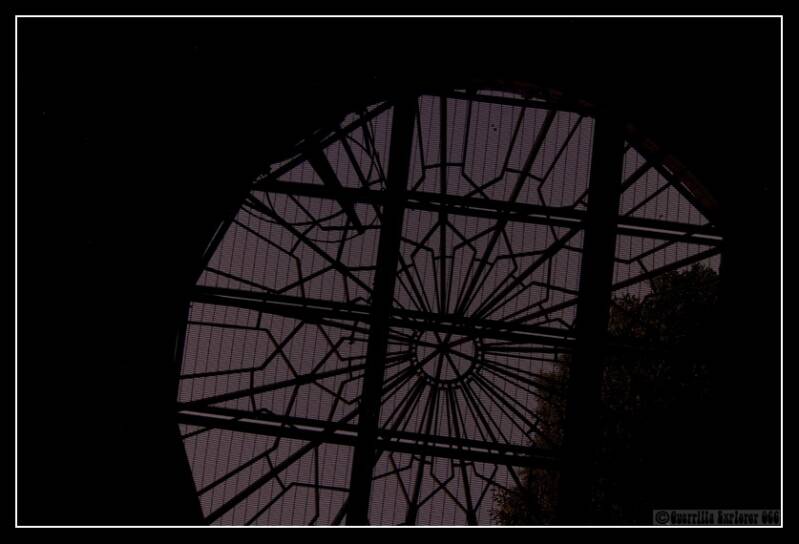
Looking down, a ventilation fan. Not somewhere I'd like to fall if it was active!
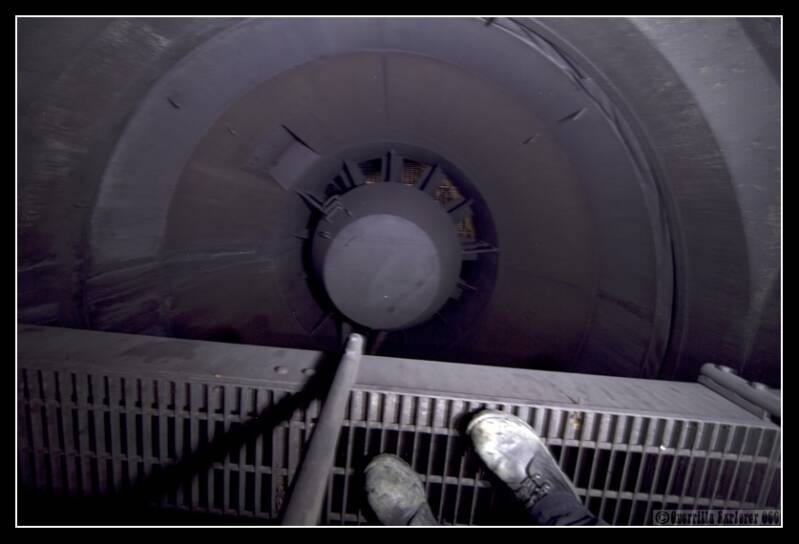
Leaving the vent chamber, and descending some steps, we arrived below the fan. A mesh floor was inside the vent casing. One of the vent sections lifted up to reveal steps going down. Intrigued, we continued on and descended.

A series of gantries and ladders followed down 15m or so. Looking up here you can see the fan blades and the metal roof cage in-between.
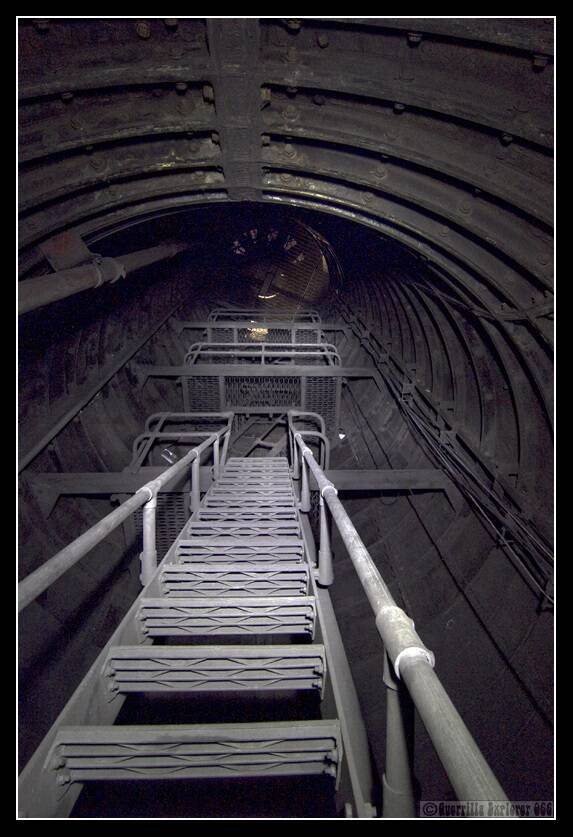
We gingerly stepped off the ladders, constantly listening and looking for signs of life that would mean a hasty retreat. We came to a door that was open, with a sign saying it shouldn't be open. Paradox 101.
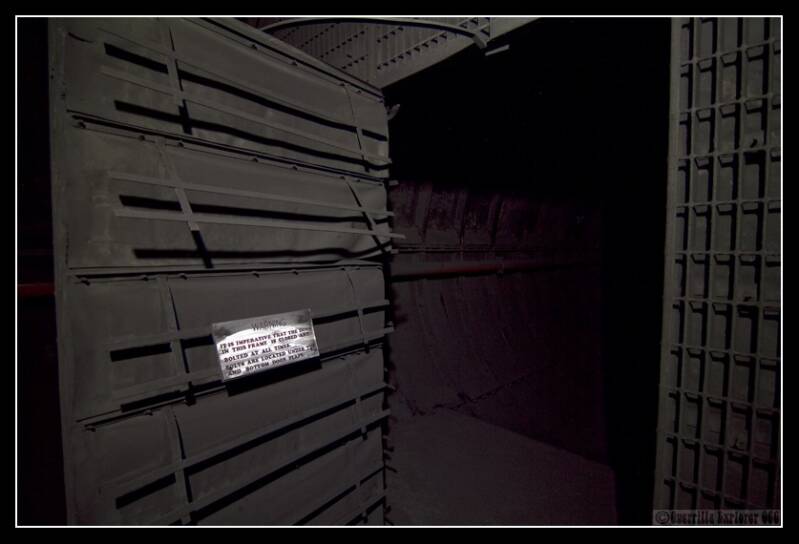
A few metres on, and we passed another set of ladders going down. Kev found this to be the same Jubilee line, but opposite direction. The North and Southbound tunnels must be on top of each other here. The Jubilee line was built late in London's life (1970s), and room underground was scarce. It's not the easiest of things to get a long exposure while light painting over a drop like this. As with the photo above of the fan, my shoes do like to get in the picture.
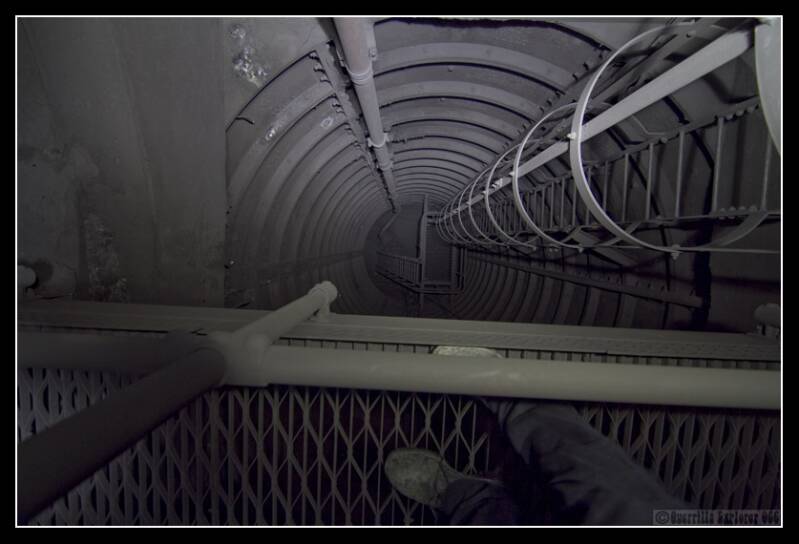
Looking back from trackside, the steps down to the opposite direction tunnel, the door that was open that shouldn't be behind it.

Turning 180 degrees from the shot above, and we were looking at the Jubilee line. The first time since our Charing Cross trip 6 months previous. We carefully tried the door, only to find it was stubbornly locked. A quick look at the lock and we found with a card we might push the latch open. On searching my wallet, the first card I produced was my Oyster card. The card worked, proving that the Oyster really is key to getting on the tube.

The 1970s concrete, as the tunnel disappears around a corner.
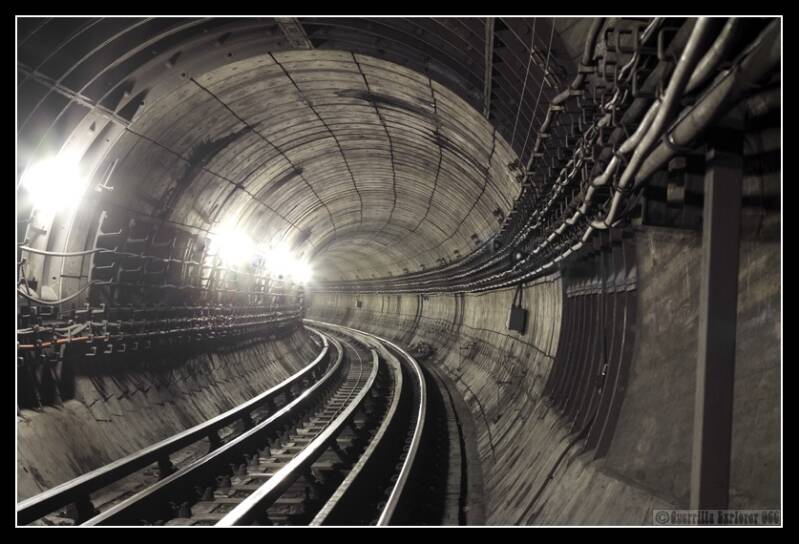
Looking the opposite way, and a chap appears to be reading a book on the tube, as you do. It happens to be Hidden Cities by an American friend and fellow explorer.

After taking the shot above, I heard voices, lots of voices. "Cripes!" I quickly packed away my stuff, the problem was, where were the voices coming from. It didn't seem like the tunnel I was in, which means the shaft or track below, where Kev was. I opted to stay put for a few minutes, and the voices passed. They must have been on the track below. The sounds come from all over down here. I went back to the ladders to the lower track, and saw Kev's headtorch bobbing up. We headed back to the surface and popped out of the park.
LRD
We'd scouted out another vent on a different line across town awhile ago, and due to it's constant use as tube access by a small van and two people doing something official. Hadn't really looked down. Again, the entrance was in a park, so necessitated crossing some scary spiky fences, and dodging park lights to stick to the shadows. Kev opted out, while I went for it. I pushed aside a bit of grill, and squeezed through the tiny gap, carefully trying to get all my clothing through without being ripped to shreds on the mesh. Directly below me was a 6m or so drop. I had to balance on a tiny ledge and waddle over to a ladder. On climbing down, I was presented with a small area, about 3m x 10m. I could hear a hose washing type sound from my left. I was concious of the fact that there were workers not far away. I quickly set up my camera for a shot. This shot below is cropped. When I originally took it, I didn't realise I was actually looking at a station!

A nice bend twists away in the opposite direction. Not far around that corner would have been another station. Where the roof slats appear to widen is a large vent that is set inside a stone feature in the park above. This section of tunnel dates from 1870, part of the Eastward expansion of the modern day District Line.

There not being much else to do, due to workers nearby, I packed up and left.
Add comment
Comments